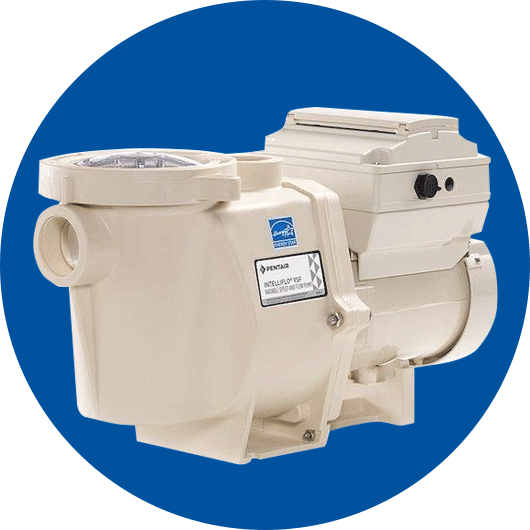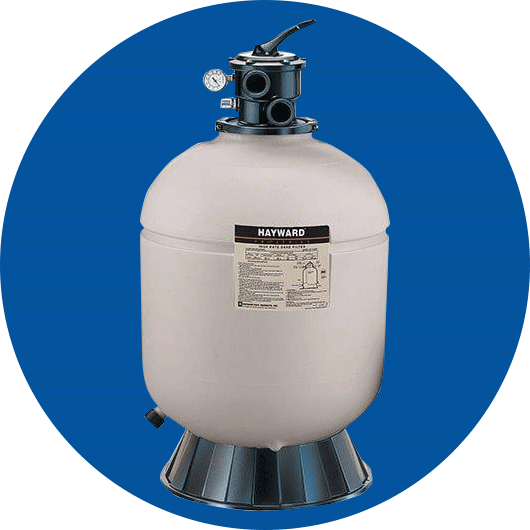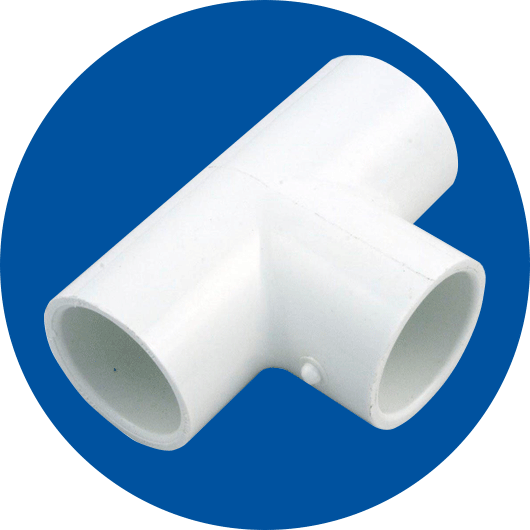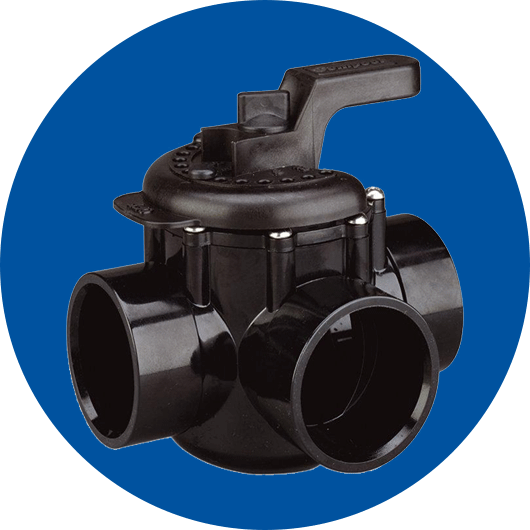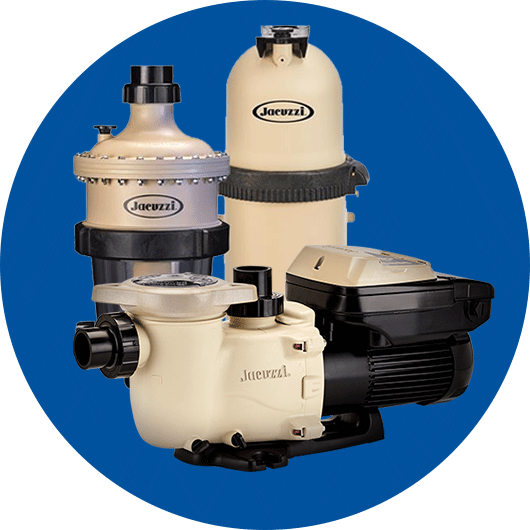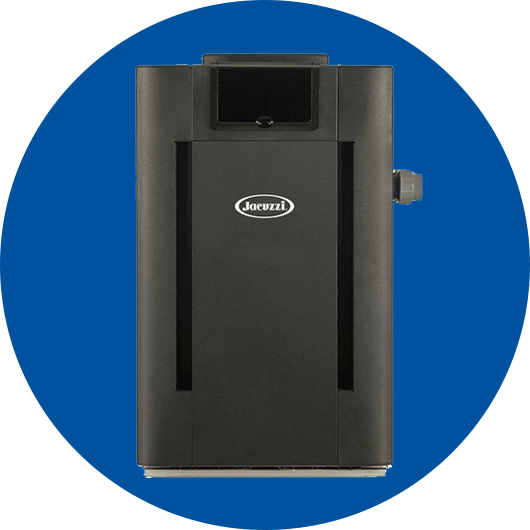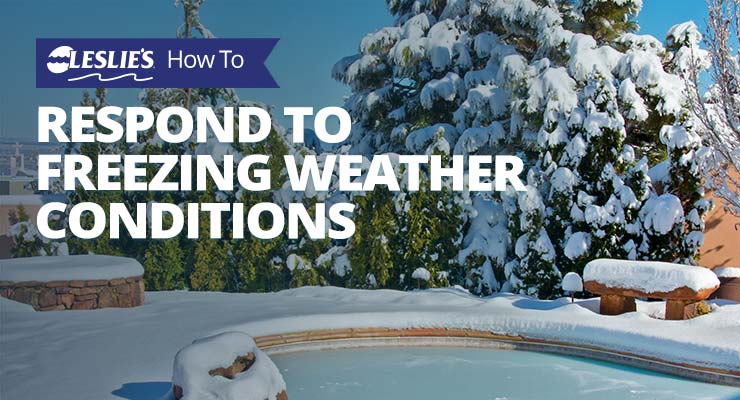
How to Respond to Freezing Weather Conditions in Your Pool
Weather can be really unpredictable, especially in winter. If you own a pool in a warmer climate, unexpected freezing temperatures and severe winter weather can cause a lot of damage to the pool, especially if you're not prepared for it.
When winter storms and cold snaps are in the forecast, these pool protection tips can help prevent major damage. And in case of a power outage caused by severe weather patterns or extreme cold, our freezing weather pool care tips can help you get through the outage without severely damaging your pool and equipment.
Important: These instructions are for pool owners who live in areas of the country where freezing conditions only occur occasionally during winter months. Pool owners in areas that experience frequent and continuous freezing conditions should close their pool for the winter.
Prepare Your Pool for Freezing Weather
If you know extreme weather is headed your way, prepare your pool by following these steps:
- Maintain proper water levels (to the middle of the skimmer).
- Balance your water to the following levels:
- pH: 7.4–7.6
- Total Alkalinity: 80–120 ppm
- Calcium Hardness: 200–400 ppm
- Free Available Chlorine: 2.0–4.0 ppm
- If you use an automatic pool cleaner, remove it, drain the water from it, and store it properly.
Without power:
If there is no power to your equipment — either from you shutting it off or from a loss of power because of the weather — follow these steps:
- Make sure all equipment has been shut off, and that the breakers to your equipment have also been turned off.
- Open the air relief valve on your pool’s filter.
- Remove the drain plugs from the front and rear headers of your pool heater. If you have a heat pump, remove those drain plugs too.
- Remove the lid and drain plugs from your pump.
- Take out the drain plugs in the filter or any other unit, such as a leaf trap, that holds water, including in-floor system water valves.
- Remove the top on Jandy valves, check valves, or other valves. If necessary, open the valves so water can move down the pipe.
- Put empty plastic gallon jugs in your pool to take up ice expansion and protect your pool tiles or finish from freezing weather. Make sure each jug has a bit of rock or sand in it to give it weight (but not full) so it breaks the surface of the water but is not fully submerged. You can also use inflatable pool floats or anything else that can absorb pressure. You can even place a weighted 5 gallon bucket on your steps or hang it over the edge in the pool. Again, the bucket must break the surface of the water.
- Put an empty plastic drink bottle (if a Gizzmo is unavailable) in the skimmer to protect it. The bottle should have enough weight to stay partially submerged, but it should not be full. You can use sand or rocks for weight. Do the same for in-deck chlorinators or deck debris traps for in-floor cleaners.
- If there is an auto leveler, wrap a towel around the vac break (backflow preventer) to prevent damage.
PRO TIP: As long as freezing water has somewhere to go in the plumbing, there will be no damage. On the pool water surface or in skimmers, the goal is to not allow a single, complete sheet of ice. Air pillows, Gizzmos, and plastic jugs will help absorb the pressure from freeze expansion. DO NOT attempt to break apart ice sheets on your own. Not only is it dangerous for you, it also exposes sharp edges, which can cause irreversible damage to pool surfaces.
With power:
Another option to prepare your pool for incoming extreme winter weather involves running your pool pump and filter continuously — starting before the water begins to freeze and continuing throughout the entire freeze period.
Important: This option is not without risks. If a power outage occurs during extreme weather conditions, your equipment will be in jeopardy. When your equipment loses power for even a brief amount of time, it’s possible that water inside your equipment can freeze, which can cause severe damage.
If you choose the option of continuously running your pool pump and filter, here are the necessary steps:
- Prior to freezing weather and low temperatures, clean or backwash your pool filter. This ensures proper water flow during the cold.
- Run your pool pump and filter continuously. Moving water freezes more slowly.
- If you have a variable speed pump, run it at higher speeds throughout the freeze period to ensure proper water flow.
- Listen to your pump motor. If it makes a loud noise during operation, there may be trouble with the bearings. As soon as the temperatures get above freezing, have the motor serviced by a professional.
- Insulate plumbing lines with blankets or towels to prevent freezing. Even pool noodles can serve as good insulation around pipes.
- Open all lines to ensure proper water flow. If a valve is shut off, no water will flow through that pipe, and there is the danger of freezing damage.
- Warning: Do not use any type of electric heaters, electric blankets, portable gas heaters, or heat lamps on or near your pool pump and filter, as they can damage equipment or cause a fire.
PRO TIP: For short-term cold spells with temperatures between 0°F and 32°F, you can run your pool heater, as long as you started before freezing conditions began, and as long as you run your pump continuously. However, prolonged heater operation with water temperatures below 50° is not recommended. It can lead to serious damage that might not be covered by a warranty.
Recovery if You Didn't Prepare
If freezing weather hits your pool without enough notice to properly prepare, damage is difficult to avoid. Frozen water in your equipment, valves, and other elements is generally quite destructive.
One option for late recovery is to cover and insulate your system's pipes as best you can. As mentioned above, you can use pool noodles, blankets, towels, or other options, but be mindful of how any option could interact with any piece of equipment that puts off heat. Adding fire damage to freeze damage is the last thing anyone wants.
If your pump, filter, heater, or pool plumbing has already been damaged by freezing water expansion, don't panic. Head over to our related blog post, How to Maintain a Pool With Damaged Equipment, for tips and tricks to keep your water clear while waiting for parts and repairs.
You can also contact us online, or call or visit your local Leslie's to see if a service technician is available to assist with solutions. It's impossible to guarantee that damage can be avoided, and Leslie's is not responsible for any existing or future damage caused by a lack of system circulation during freezing conditions.
After the freezing temperatures or unexpected weather event passes, a Leslie's technician can inspect your system, then identify and assess any resulting damage. Getting your system back up and running as soon as possible is key to ensuring your pool stays healthy and properly maintained.
Checking For Damage
As mentioned earlier, we strongly recommend hiring a pool service professional to carefully examine your pool and equipment after a damaging freezing incident. Not all damage is visible to the naked eye, and a professional will know exactly what to look for. But if you need to get a general idea of your pool's status after a freezing incident, there are a few steps you can take to assess the damage on your own.
Equipment pad:
- Open the filter's air relief valve to depressurize the circulation/filtration system.
- Disassemble and carefully inspect all valves for visible damage, and ensure the check valves are not sticking shut.
- Visually check all plumbing fittings for signs of damage. Again, ensure pressure side check valves are not sticking shut.
- Inspect the pump, filter, heater, chlorinators, saltwater chlorine generators, in-floor cleaning system water valves, or any other equipment for signs of freeze damage. Even a small hairline crack could be a safety hazard under pressure.
- After careful inspection, if there are no visible signs of damage, prime the filter pump and turn the power on. Remember to open the air relief valve on your filter first. Do NOT stand next to the filter while you complete this step.
- If the pump primes, close the air relief valve when water spurts continuously out of the valve. Stand back and look for signs of system leakage once the system is up to full pressure. If you notice leakage, shut off the system and contact a pool service professional.
- In the event that the pump doesn’t prime immediately, shut off the power and repeat the process. If it still won’t catch prime, shut the power back off. One of the suction side components may have been damaged during the freeze. Again, contact a pool service professional.
Poolside:
- Check the waterline for any loose or cracked tiles. Lightly tapping the tile with a golf ball will alert you to any loose tiles. Listen for a hollow sound to know if it's loose.
- Inspect the skimmer body and weir gate for visible signs of cracks from freeze expansion.
- Take a careful look at your automatic pool cleaner hoses to see if they're kinked or cracked anywhere.
- If you have an in-floor cleaning system, inspect the in-deck debris canister for signs of damage. Also check over any in-deck chlorinators.
- Check over any water features where water may have puddled, such as a waterfall, to see if there's damage present.
Suffering freeze damage? Leslie's is here to help! Stop by your local Leslie's to speak with one of our pool care experts, or request a service appointment online. If you're looking for specific parts and equipment, check out our diverse online selection of replacement products:
When unexpected freezing weather strikes, don't fret. Leslie's is here to help. Follow the tips above to help protect your pool against freeze damages, or let us help you out with the recovery process. No matter what pool issues you're facing, you can count on the team at Leslie's to answer all your toughest pool care questions.
